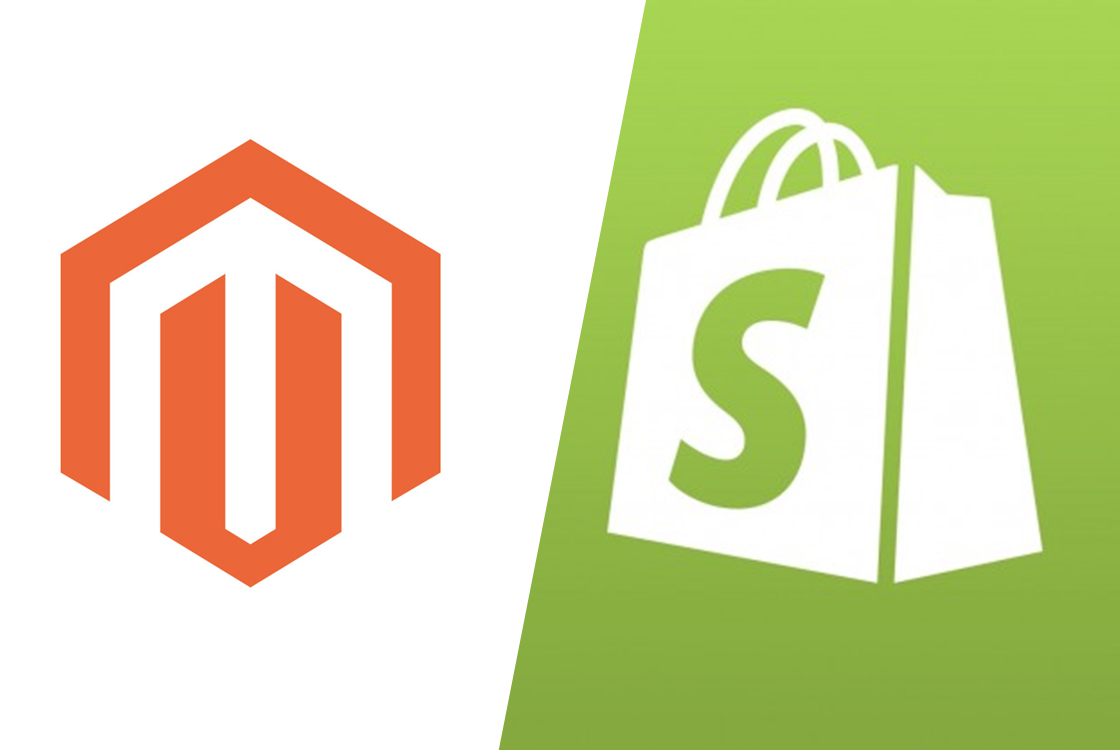We’ve explored platform choice for Magento and other e-commerce sites before. There is a plethora of choices and we will examine the most popular and feature rich e-commerce platforms and other options. Watermelon Web Works does a lot of work with Magento and Magento 2, but occasionally we do get questions related to another big name in e-commerce: Shopify. Here, we examine the pros and cons of these platforms, as they are wildly popular and…wildly different.
We believe flexibility and customer experience are the critical metrics of a successful online shopping experiences, and both of these platforms get you started right out of the gate with product catalogs, payment solutions, and other typical configurations. But what sets them apart?
In working with Shopify, the barrier to entry is quite low and the rich feature-set is shallow. Magento is built in the opposite manner. Let’s take a closer look.
Magento vs. Shopify Features
Magento 2 has a learning curve, without question. It is powerful and there is a ton going on under the hood, even with a basic install of the open source version (the Enterprise version has even more fully-fledged configurations and tools). The big difference between Magento and Shopify here is in customization. Magento allows for a huge amount of customization. You can hook and extend pretty much every aspect of the entire Magento system, from product display to checkout to custom payment gateways. Shopify is much more limited, bringing only a finite set of customizations and very little extensibility.
Magento 2 is an open source platform, which means you can examine every line of code available and make informed choices on what and what not to extend. It has a straightforward path to deploying plugins, new extensions, and overrides, with associated documentation readily available, and uses the hugely popular programming language PHP. Shopify by comparison is a closed system. This means you cannot really look under the hood and do whatever you want. You are limited to the tools Shopify developers give you. Shopify also uses a proprietary programming language. What this ultimately means for you is that Shopify may be quick to get off the ground, but will be a huge chore to customize, and some customizations may be impossible to do with the system. You will also find it much more difficult to find developers who can make these customizations happen on Shopify, where there will be a much broader ecosystem of developers for Magento.
Magento also provides a ton of customization opportunities with its extension Marketplace. There are hundreds of unique extensions available to perform almost any customization you can think of under the sun. Of course, Shopify also has an app store to extend its platform. One major difference here again is that Magento extensions can be modified further with an experienced developer.
Magento tops off the features list with a variety of built-in features that Shopify doesn’t provide: multi-stores, multi-language configurations, complex product catalogs, and order management. Integration with 3rd party applications (like Customer Relationship Management, Enterprise Resource Planning, Product Information Management, Association Management Systems, etc.) is much easier to deal with using Magento’s API system. Shopify falls short in this arena.
Magento vs. Shopify Performance and Reach
Magento Cloud services have a global hosting footprint. This means reliability is extremely high for Magento Cloud installations. Shopify utilizes shared hosting services. Unfortunately this means Shopify’s reliability will not be as consistent as a dedicated Magento platform. There are also a number of other webhosts that can provide the same level of reliability outside of the Magento Cloud hosting options. Ultimately this means Magento installs have many more options available for hosting, giving you much more flexibility in your hosting setup.
Magento’s technology stack also allows for a large number of optimizations, included multiple caching tools (Redis, Varnish), multiple search engine integrations (for improved search performance), built in support for content delivery systems to improve page speed, and more. Shopify does not provide this level of optimization features unfortunately.
Magento has built-in support for multi-language sites. This allows huge reach for your e-commerce options, allowing international sales, sub-sites language support, different catalogs per region, and more. By comparison, Shopify’s reach is much more localized to the United States. Barely any Shopify sites are being used to sell globally. If this is a consideration for your business, Magento provides the tools to allow global e-commerce out of the box.
Magento vs. Shopify Price
Obviously one consideration if not the biggest will be pricing. Here is where Shopify has an edge on Magento Enterprise. Shopify can be a cheaper alternative, but you must weigh this against the benefits of the extensibility of Magento. If your shop requires a great deal of customization, Magento will still be leaps and bounds a better fit.
Magento Enterprise: $22,000 (or more, based on expected annual gross sales revenue)
Shopify: $79/month
Shopify Advanced: $299/month
Ultimately, the costs of Magento and Shopify may be the critical factor in your choice. You will have to think about your product catalog and its complexity. Migrating from one environment to another will always incur some costs, so choosing the right platform at the start will save you a lot of headache. Magento, particularly Enterprise, will typically have a higher cost to develop compared to Shopify, but if you find the limitations of Shopify to be unworkable, Magento by comparison will allow a much higher degree of customization.
If you do not need to customize Magento’s default configurations, then Magento would be cheaper to deploy than Shopify. Even with some customization, Magento Commerce could still be cheaper, but you will want to examine closely how much customization is needed. Shopify might be able to get the job done, but Magento’s flexibility will ultimately give you a far richer feature set and is typically the right choice for a complex or highly customized e-commerce solution.

